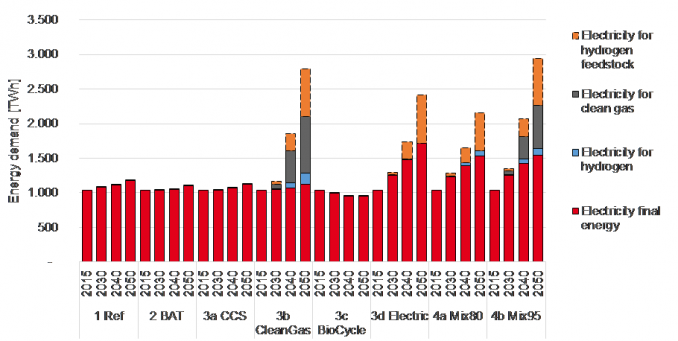FORECAST/eLOAD
-
07.08.2020 Industrial excess heat for district heating: Database shows great potential for supplying households
Excess heat from energy-intensive industries is often suitable for use in district heating systems but is usually unutilized. A detailed overview of the potentials available in the EU is now provided by a database of the sEEnergies project. In Germany, 29 petajoules of excess heat from industrial sites could be used, which corresponds to the demand of more than half a million households. The information is available as maps and downloadable datasets.
New FORECAST scenarios show: Deep decarbonization of industry is possible with innovations
22.03.2019
On behalf of the EU Commission, the Fraunhofer Institute for Systems and Innovation Research ISI together with ICF Consulting Services Limited explored the contribution that individual technologies can make to decarbonizing industry and the possible paths that lead to this by 2050.

The study “Industrial Innovation: Pathways to deep decarbonization of
Industry” focused in particular on the industrial production of basic materials
like steel, cement, ethylene, ammonia and glass: These account for the majority
of industrial emissions and are simultaneously especially difficult to
decarbonize.
The researchers used the FORECAST simulation model developed
by Fraunhofer ISI that has a high resolution of technologies and calculated
eight alternative scenarios. The results show that the greenhouse gas emissions
of industry could be reduced by 80 to 95 percent by 2050 compared to 1990. Most
scenarios show a dramatically increasing electricity demand as the result of
electrification and the use of hydrogen or synthetic methane produced from
renewable energies via electrolysis.
The report and a detailed data annex are available at the project website.
© 2024 Fraunhofer ISI | Publishing Notes | Data Protection


